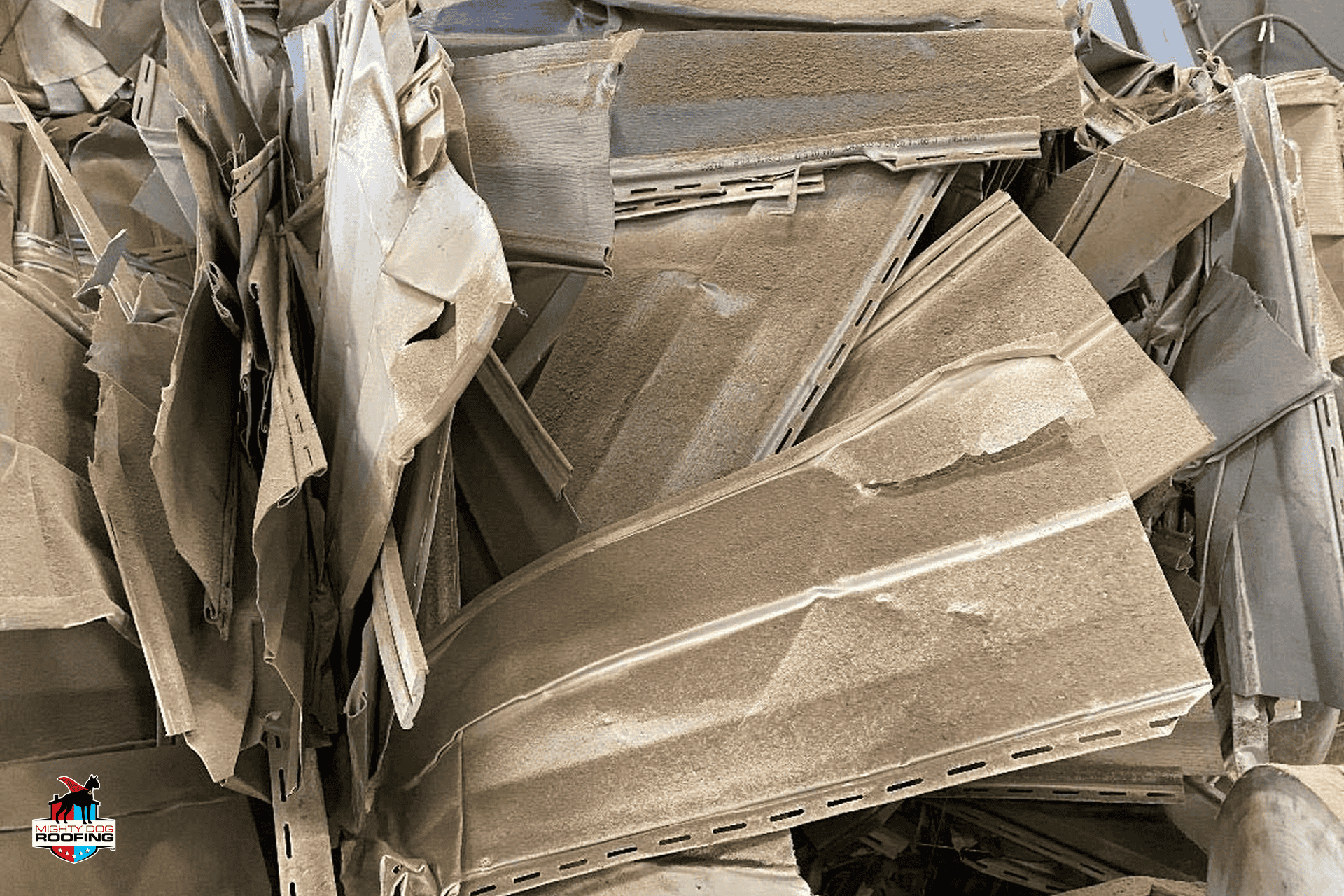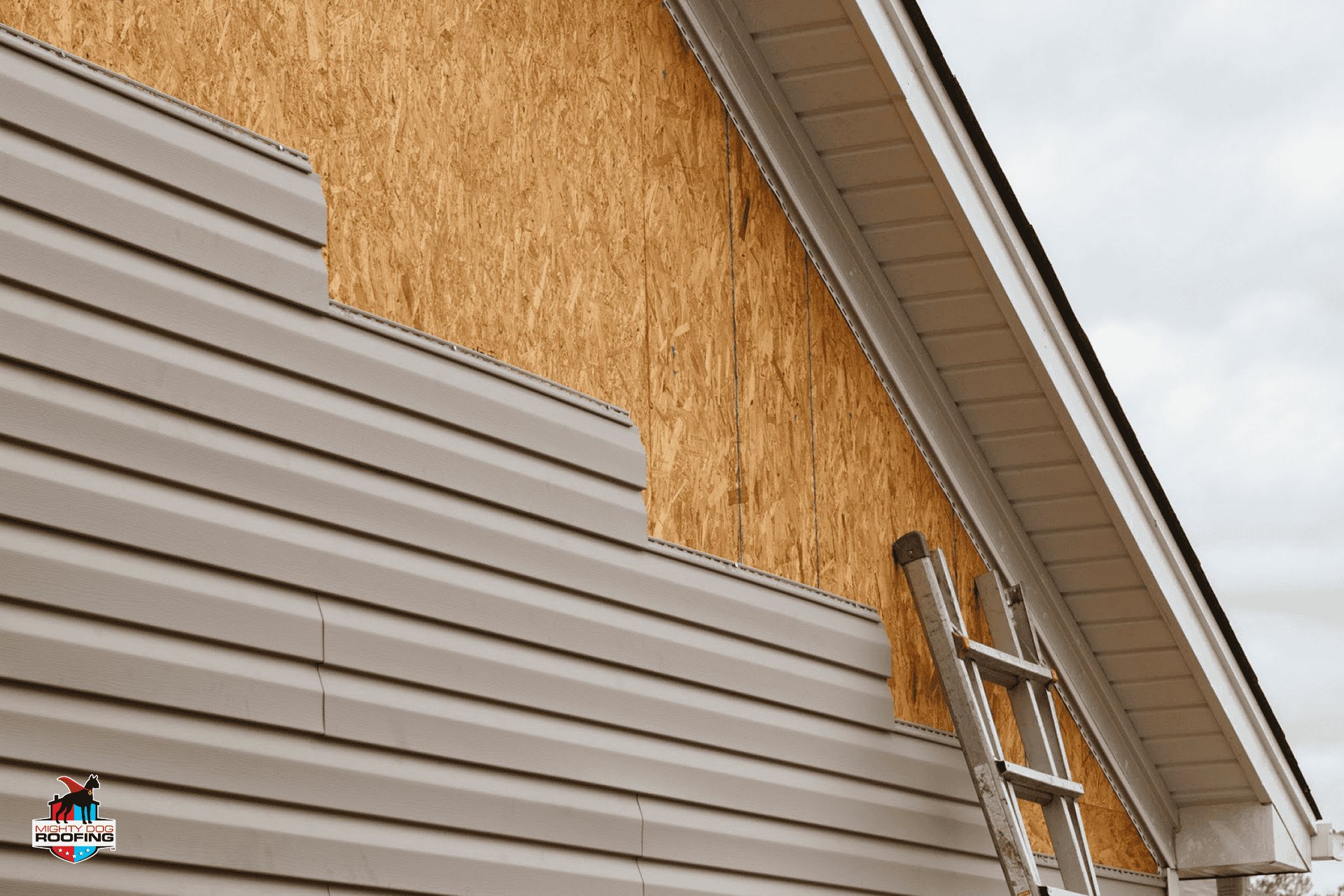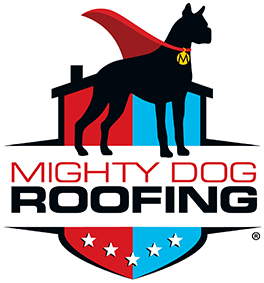As homeowners in South Jersey and across the country increasingly prioritize environmental responsibility alongside durability and aesthetics, sustainable siding has emerged as a crucial element in modern home design. Leading contractors like Mighty Dog Roofing are seeing growing demand for these innovative materials that not only enhance your home's exterior but also significantly reduce environmental impact through improved manufacturing processes, recyclability, and energy efficiency. From reclaimed wood to advanced fiber cement composites, today's eco-friendly siding options offer sophisticated solutions that protect both your home and our planet's resources.
The Environmental Impact of Traditional Siding Materials
Traditional siding materials like vinyl and aluminum have created substantial environmental challenges throughout their production lifecycle. The manufacturing of vinyl siding relies heavily on petroleum products and releases harmful volatile organic compounds (VOCs) into the atmosphere, while creating non-biodegradable waste that persists in landfills for centuries. Aluminum siding production demands extensive bauxite mining operations that often lead to deforestation and habitat destruction, coupled with energy-intensive processing that generates significant greenhouse gas emissions and toxic byproducts.
This growing awareness of environmental impacts has sparked a fundamental shift in the construction industry, particularly in South Jersey and beyond, in how we approach home exterior materials. Companies like Mighty Dog Roofing and other professional green siding installation services have emerged to meet rising demand from environmentally conscious homeowners who seek sustainable alternatives without compromising on quality or durability. Modern eco-conscious exterior solutions now offer superior performance while significantly reducing environmental impact, making them an increasingly attractive option for both new construction and siding replacement projects.
Carbon Footprint and Material Life Cycle
Making informed decisions about siding materials requires a comprehensive understanding of their environmental impact throughout their entire lifecycle. When conducting an eco-friendly home exterior assessment in South Jersey, experts at Mighty Dog Roofing evaluate multiple factors including raw material sourcing, manufacturing processes, transportation distances, and installation methods. These assessments reveal that traditional vinyl siding typically generates 2-3 times more carbon emissions during production compared to sustainable alternatives, highlighting the significant environmental advantages of choosing green materials.
Life cycle assessment (LCA) helps quantify the long-term environmental implications of different exterior material choices. This systematic approach examines everything from initial resource extraction to end-of-life disposal, providing crucial data about each material's true ecological footprint. Professional green siding installation services use these assessments to help homeowners make environmentally responsible choices that align with their sustainability goals. To get a green siding estimate for your home, reach out to eco-conscious siding solutions providers in your area.
Environmental Impact Comparison of Siding Materials
Siding Material | Lifespan (Years) | Recyclability | Carbon Footprint (CO2/sq ft) |
Reclaimed Wood | 40-60 | 100% | 0.5-1.0 |
Fiber Cement | 50+ | 80% | 1.5-2.0 |
Metal (Recycled) | 50+ | 100% | 1.0-1.5 |
Traditional Vinyl | 20-30 | 25% | 4.0-5.0 |
These comparisons demonstrate the clear environmental advantages of sustainable exterior options over conventional materials. The data shows that investing in eco-conscious siding solutions can significantly reduce a home's environmental impact while providing superior longevity. When you compare eco-friendly siding prices, be sure to factor in the long-term benefits and energy savings.
Recycling and Circular Economy in Siding
The evolution of recycling technologies has revolutionized how we approach siding installation and replacement. Modern manufacturing facilities now incorporate sophisticated recycling systems that can process post-consumer materials into new, high-quality siding products, significantly reducing waste and resource consumption. When calculating the cost of sustainable siding, it's crucial to consider that many sustainable options can be fully recycled or repurposed at the end of their lifespan, contributing to a more circular economy in construction. Mighty Dog Roofing and other industry leaders have embraced these sustainable practices, recognizing their importance in modern construction.

Key Innovations in Sustainable Siding Manufacturing
- Advanced Material Recovery: Automated sorting systems separate and process different types of siding materials with 99% accuracy
- Zero-Waste Production: Closed-loop manufacturing processes reuse water and minimize material waste
- Solar-Powered Facilities: Integration of renewable energy in manufacturing reduces carbon footprint
- Bio-Based Alternatives: Development of siding materials from agricultural waste and renewable resources
- Smart Recycling Programs: Manufacturer take-back initiatives ensure proper end-of-life material handling
- Local Processing Centers: Reduction of transportation emissions through decentralized recycling facilities
These technological advancements in sustainable manufacturing continue to transform the exterior cladding industry, making eco-conscious siding solutions increasingly accessible and cost-effective. Leading manufacturers now employ solar power, water recycling systems, and advanced waste reduction techniques in their production facilities, demonstrating that environmental responsibility and high-quality construction materials can go hand in hand.
Top Sustainable Siding Materials
The market for environmentally friendly exterior solutions has expanded dramatically in South Jersey, offering innovative materials that combine sustainability with exceptional performance. Reclaimed wood siding leads the way in environmental stewardship, giving new life to salvaged timber while preventing deforestation and providing unmatched character to home exteriors. Recycled metal siding represents another breakthrough, incorporating up to 95% post-consumer content while delivering superior durability and weather resistance. Advanced fiber cement products now incorporate sustainable additives like recycled glass and natural fibers, offering exceptional longevity with reduced environmental impact. Bio-based materials, including compressed agricultural waste panels and bamboo composites, showcase the industry's latest innovations in sustainable construction.
Each sustainable exterior option brings distinct advantages that cater to different architectural styles and climate conditions. Reclaimed wood provides superior insulation properties and natural aesthetic appeal, though it requires periodic maintenance to ensure longevity. Recycled metal siding excels in severe weather conditions and requires minimal upkeep, making it ideal for coastal areas where durability is paramount. Fiber cement stands out for its fire resistance and dimensional stability, while bio-based materials offer excellent moisture resistance and natural insulation properties. When you schedule an eco-friendly home exterior assessment, professionals can help evaluate which of these sustainable materials best suits your specific needs, considering factors like local climate, architectural style, and maintenance preferences. Homeowners looking to install green home materials can explore renewable siding materials near them by consulting with local eco-conscious contractors.
Energy Efficiency and Home Performance
The selection of sustainable siding significantly influences a home's overall energy performance and comfort levels. High-performance eco-conscious siding solutions can reduce heating and cooling costs by up to 20% through improved insulation and thermal regulation. Modern sustainable materials often incorporate advanced features like reflective pigments, insulated backing, and thermal break technology that minimize heat transfer. When homeowners book a sustainable home exterior consultation with Mighty Dog Roofing, professionals evaluate how these materials can work in conjunction with existing insulation systems to create a more energy-efficient building envelope, potentially saving hundreds of dollars annually on utility bills.
Beyond immediate energy savings, sustainable exterior cladding plays a crucial role in passive home design strategies that optimize natural temperature regulation. Materials with high thermal mass help moderate indoor temperature fluctuations by absorbing excess heat during the day and releasing it slowly during cooler nights. Light-colored siding reflects solar radiation, reducing cooling loads during summer months, while darker materials can help absorb beneficial heat in winter. Advanced installation techniques, including proper ventilation gaps and moisture barriers, further enhance these benefits by preventing heat loss and managing moisture levels effectively. This comprehensive approach to energy efficiency makes sustainable exterior materials a cornerstone of modern green building practices.

Cost and Long-Term Value
While sustainable exterior materials often require a higher initial investment compared to conventional options in South Jersey, their long-term financial benefits typically outweigh the upfront costs. Professional green siding installation delivers superior durability and performance, resulting in reduced maintenance requirements and longer replacement intervals. When calculating sustainable siding costs, it's essential to consider the complete financial picture, including energy savings, increased property value, and available incentives that can significantly offset the initial investment.
Financial Benefits of Sustainable Siding Investment
- Energy Cost Reduction: Average annual savings of 15-25% on heating and cooling expenses
- Extended Lifespan: 40-50 year durability compared to 20-30 years for traditional materials
- Property Value Increase: 5-10% boost in home resale value with certified green materials
- Tax Incentives: Federal tax credits of up to $500 for energy-efficient building materials
- Insurance Benefits: Potential premium reductions for impact-resistant sustainable materials
- Maintenance Savings: 50-70% lower maintenance costs over the material's lifetime
The financial advantages of sustainable home exteriors extend well beyond mere energy savings. When you get an environmentally friendly siding quote, our experts provide detailed cost-benefit analyses that account for local rebates, utility incentives, and green building certification benefits. Many homeowners find that their eco-conscious siding solutions pay for themselves within 5-7 years through reduced energy bills, lower maintenance costs, and increased property value. This makes sustainable exterior upgrades an intelligent long-term investment in both environmental and financial terms.
Take the First Step Toward Sustainable Home Improvement
Ready to transform your South Jersey home with environmentally friendly siding? Mighty Dog Roofing's expert team is here to help you navigate green home exterior options and find the perfect solution for your home's exterior. Our specialists will assess your property and recommend eco-friendly siding that enhances curb appeal while protecting the environment. Contact us to explore environmentally friendly siding quote options and discover how green building materials can boost your property's value. From renewable resources to energy-efficient designs, we offer comprehensive exterior solutions that support a sustainable future. Reach out to discuss renewable siding materials near you and join the growing community of homeowners making responsible choices for their homes and the planet.


